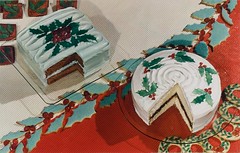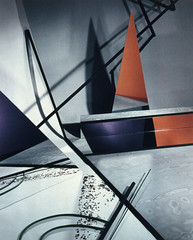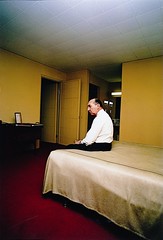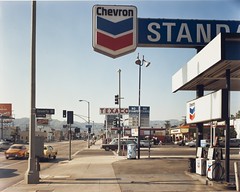Biographies

Edward Steichen
(1879–1973)
Born in Luxembourg, Edward Steichen immigrated to the United States as an infant, settling in Milwaukee, Wisconsin, at the age of ten. In 1894, at the age of fifteen, Steichen began a four-year lithography apprenticeship with the American Fine Art Company of Milwaukee. After hours he would sketch, draw, and paint. He took up photography in 1895, and this would eventually become his passion. He left Milwaukee for Paris in 1900, stopping in New York to meet Alfred Stieglitz along the way. Two years later, he returned to New York, where he and Stieglitz founded the Photo-Secession, a group of photographers devoted to the promotion of photography as a fine art equivalent to painting and sculpture. He was chief photographer for the magazine publisher Condé Nast from 1923–1937, and was director of the department of photography at the Museum of Modern Art in New York from 1947–1962.
Steichen championed the development of color photography in American art from its introduction via the autochrome in 1907, through its commercial dominance on the printed page in the 1920s and 1930s, to its initial acceptance by museums in the 1940s. Over a career spanning nearly six decades, Steichen remained committed to the potential of color photography to thrive in both the aesthetic and commercial realms.
Image: Edward Steichen (American, b. Luxemburg, 1879–1973) Bouquet of Flowers, January 8, 1940. Dye transfer print. 9 9/16 x 6 5/8 in. (24.3 x 16.8 cm). Collection of George Eastman House (Bequest of Edward Steichen by Direction of Joanna T. Steichen). Permission of the Estate of Edward Steichen, Courtesy of George Eastman House, International Museum of Photography and Film.

Nickolas Muray
(1892–1965)
Nickolas Muray’s illustrious career as a color advertising photographer established his place as an aesthetic and technical pioneer of commercial color photography. Before coming to America at the beginning of World War I, Muray studied color photoengraving and worked for a publishing firm in Germany. He put his professional publishing and printing background to work when he arrived in New York, where he was hired as a magazine color technician, engraver, and photographer. Muray quickly began receiving contracts to create color photographs for both publications and specific commercial products. His advertising photography made its debut at a fine-art institution when Beaumont Newhall included two of his carbro prints in the color section of the 1937 exhibition Photography: 1839–1937 at the Museum of Modern Art, New York.
Image: Nickolas Muray (American, 1892–1965) Christmas Cakes and Cookies, ca.1935. Carbro print. 14 1/2 x 22 5/16 in. (36.9 x 56.6 cm). Collection of George Eastman House (Gift of Mrs. Nickolas Muray). © Nickolas Muray Photo Archives, Courtesy of George Eastman House, International Museum of Photography and Film.
Anton Bruehl
(1900–1982)
In 1931, Condé Nast appointed Anton Bruehl as its chief color photographer, thereby commencing the collaboration between the photographer and the publisher’s team of engravers and colorists, particularly Fernand Bourges. Bruehl, who had not yet worked in color, was likely hired because of the meticulous, modern aesthetic he had cultivated in his photography. In addition to optimizing studio exposures through strong lighting, Bruehl and Bourges innovated an engraving transfer process that gave commercial printers a more precise way of rendering natural color. After the conclusion of the Bruehl-Bourges collaboration in 1936, Bruehl created a wide array of editorial and commercial color photographs for publication.
Eliot Porter
(1901–1990)
Eliot Porter’s color nature photographs were among the earliest color photographs to be exhibited in museums. Porter, who held both engineering and medical degrees, began using photography as a means for scientific research. His interest in the biology of birds led him to start actively photographing them in black and white in 1937. Two years later, he decided to take up photography professionally and quickly made the switch to color, using Kodachrome film.

Ansel Adams
(1902–1984)
By the prosperous postwar years, Kodak began to hire recognized fine-art photographers, including Ansel Adams, Edward Weston, and Walker Evans, to test their newest color products in an attempt to reframe color as a powerful tool for both the dedicated amateur and the creative professional. Adams’s color photographs were incorporated into widely circulated Kodak advertisements and he participated in the company’s Colorama campaign, making images for 18 x 60-foot transparencies displayed in Grand Central Station. While Adams was not always convinced that his color work was art, the Museum of Modern Art, New York, presented his color photographs and transparencies in several important exhibitions, including In and Out of Focus: A Survey of Today’s Photography (1948) and Color Photography (1950).
Image: Ansel Adams (American, 1902–1984) Zabriskie Point, Death Valley, CA, ca. 1959. Colorama facsimile. Original transparency courtesy of George Eastman House, International Museum of Photography and Film.
Helen Levitt
(1913–2009)
Helen Levitt, a highly accomplished black-and-white photographer, subtly integrated color into her monochromatic practice of street photography. After working in the 1940s as a black-and-white still photographer and experimenting with motion picture film throughout the 1950s, Levitt returned to capturing the unmediated moments of everyday life, this time in color. Levitt received a Guggenheim Fellowship in 1959 to pursue a study of ”the techniques of color photography,” an honor she was again awarded the following year. In making the photographs for the fellowship, Levitt revisited New York neighborhoods that were the sites of her earlier black-and-white street photographs.
Irving Penn
(1917–2009)
After joining the staff of Vogue magazine in 1943, Irving Penn quickly distinguished himself with simple color compositions that would mark his work at the magazine throughout his career. Penn created color photographs that were shown in several group exhibitions, including MoMA’s Color Photography (1950), the American Museum of Photography’s A Half Century of Color: 1900–1950 (1951), and Yale University Art Gallery’s Color Photography: Inventors and Innovators (1976). Penn’s deliberate color compositions set the tone for the medium’s use in postwar fashion and commercial photography.
Ernst Haas
(1921–1986)
In 1949, the same year he joined the press photographers’ cooperative Magnum, Ernst Haas began experimenting with color film and was immediately exuberant about the results. His photographs of New York City are among the most outstanding examples of his early efforts. In 1956 Haas began using color film to capture motion, and Life featured these images in August 1958 in a photo-essay titled “The Magic of Motion in Color—Famous Photographer Explores New Dimension of His Art.” The accompanying article describes Haas’s images as innovative explorations of the relationship between color, photography, and the representation of time. In 1962 MOMA presented a ten-year retreospective of Haas’s work, Ernst Haas: Color Photography. This exhibition was not only Haas’s first solo show in the United States but also one of the first MoMA exhibitions fully dedicated to the color photographs of a single artist.

Barbara Kasten
(born 1936)
Like John Baldessari or Jan Groover, Barbara Kasten began incorporating photography into an art practice based in other media. In 1975 Kasten created a series of cameraless photographs made by directly exposing objects atop sensitized photographic paper. These minimalist works were soon followed by large-scale studio constructions, which, when captured on either her 8-by-10 camera or a 20-by-24 Polaroid camera, further blurred the lines between painting, sculpture, and photography.
Image: Barbara Kasten (American, b. 1936) Construct PC 1 B, 1981. Internal dye diffusion transfer print. 20 x 24 in. (50.8 x 60.96 cm). Lent by the artist. Courtesy of the artist and Bortolami, New York.

William Eggleston
(born 1939)
Eggleston began taking photographs of his native South on color film in 1965 and soon worked exclusively in color. In 1967 Eggleston traveled to New York to meet for the first time with curator John Szarkowski at the Museum of Modern Art, New York, who responded positively to the images, which Eggleston had studiously extracted from the everyday, color-filled world. Over the next several years, Eggleston embarked on a number of road trips, and an image from these trips became his first dye transfer print in 1972. Eggleston became dedicated to this type of color print, which was common in commercial photography, for his own work.
Image: William Eggleston (American, b. 1939) Huntsville, Alabama, 1978. Dye transfer print, printed later. 18 1/4 x 12 3/4 in. (46.36 x 32.39 cm). Milwaukee Art Museum, Richard and Ethel Herzfeld Collection M1991.198. © Eggleston Artistic Trust. Courtesy Cheim & Read, New York. Image by Efraim Lev-er

Stephen Shore
(born 1947)
In the late 1960s, Stephen Shore set out on a series of road trips that would result in his best-known photographs. The subjects of these images —roadside architecture, small-town intersections, diner food, and hotel rooms— defined the landscape of popular culture at the time, and Shore’s deadpan depiction of them drew attention to the ordinary texture and sameness of American life. His use of color film and a snapshot style carefully maintained even after he switched to large-format cameras in 1973 and 1974– further inscribed his art with the mark of everyday life, linking it with both Pop and Conceptual Art.
Image: Stephen Shore (American, b. 1947) Beverly Boulevard and La Brea Avenue, Los Angeles, California, June 21, 1975, 1975. Chromogenic print. 11 15/16 x 15 1/16 in. (30.32 x 38.26 cm). Milwaukee Art Museum, Purchase, Herzfeld Foundation Acquisition Fund M2011.36. © 1975 Stephen Shore, courtesy of 303 Gallery, New York Image by John R. Glembin.


